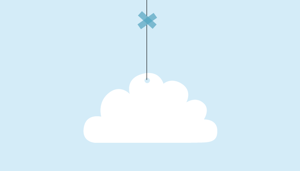When you use the term SaaS (Software as a Service) in the event industry, you often see question marks appear in the eyes of the event manager. When it comes to events, SaaS is a relatively unknown term in the event industry, even though it is an increasingly common business model for software developers. SaaS is software offered as an online service. Common examples of SaaS applications are Trello, Slack, Salesforce and Momice.
SaaS offers a lot of advantages for event organisers: you won’t have to purchase software: you pay a license fee to use it. You can use the software to automate many event-related processes.
If you use it for all your events, you gain valuable insights from analysing the data in the software - while staying in control of both data and processes. When considering to use SaaS for your events, there are a couple of things to keep in mind:
Software as a Service (SaaS)
Almost all organisations are currently in a digital transformation. Many processes are being digitalised - and that requires good software. Instead of developing the software themselves, more and more companies make use of SaaS solutions.
By now, almost 34% of the Dutch software budget is spend on SaaS. Examples are CRM, marketing, project management and communication tools, that are used to optimize processes and gain more insights. SaaS suppliers take care of updates and maintenance - so this will no longer be on your plate!
According to Bynder, the most important advantages of Software as a Service are:
- Quick implementation
- Scalability
- No long term investments
- Easy third party collaboration
- Reducing IT expenses
- Better support
Event manager activities are screaming for SaaS
Registration and event communication can quickly become time consuming and unclear. As an event manager, you’re looking for ways to save time and get more control and insights. And yet, in a lot of cases, the software that is used is not suitable for events. Examples are Outlook for invitations and Excel lists to keep track of registrations. And for bigger events, organisations often choose to work with external (registration) partners.
When you’re working with many different systems and/or parties, you run the risk of losing the overview and work inefficiently - which will lead to high costs.
Momice offers SaaS solutions for events: software that enables you to build your own event, keep track of registrations, send mailings and surveys, and analyse statistics.
Look beyond the features
When you are looking for SaaS solutions, you need to check if the supplier matches your requirements. Make a list of all must-have and nice-to-have features you want your event software to include. While making the selection, keep the following things in mind:
1. Security
You are going to make use of an online service for storing and processing the personal data of your contacts, so you want to make sure your SaaS partner will do whatever it takes to secure the data. Ask for their security policy and security test reports. These documents can be very technical, so involve the IT/security department of your organisation in this process.
2. SaaS license model
SaaS solutions are often based on a license model that can be purchased on a monthly or yearly basis. In many cases, paying for a full year is more cost efficient. License models often consist of different packages, based on the number of users or features. Determine who will be using the software - and which features each person needs.
3. Terms and conditions
Terms and conditions are an important element of the SaaS contract. This document contains information about support, opening times, contact persons, maintenance and calamities.
The terms uptime (online) and downtime (offline) are important terms when it comes to SaaS: when will the service be unavailable, for example due to maintenance activities? Services often guarantee 99,7% uptime. Calamities like cyber attacks and technical issues can influence the availability of the software. Look into the terms and conditions before signing the contract.
4. Privacy
Discuss how your SaaS partner handles the data in the software. In most cases, a separate processor agreement is made. As of May 2018 this agreement is mandatory in the EU. It concerns questions like: Who can access the data? Where is the data center located? If the servers are on EU territory, different laws and regulations apply as opposed to servers located on US grounds.
5. Connections to other SaaS solutions
Because SaaS solutions operate online, it is possible to connect different systems. Think about which other SaaS software you would like to connect to your event software.
For example, if you link it to your CRM, you automatically keep your registration data in the contact card of your relations, without importing and exporting Excel lists. Also, the Marketing- and Sales departments can now view the event data - and use the insights for their own purposes.
Conclusion: Software as a Service is perfect for events!
SaaS solutions can have a huge impact on the activities of an event manager. They are more cost efficient, more effective and easier to manage than software systems that are not developed for event purposes. Always keep security, privacy and license models in mind when selecting software for your events.
Are you considering your options for developing your own event software? Here are 6 reasons NOT to do it!

